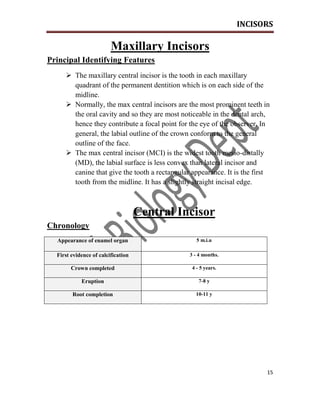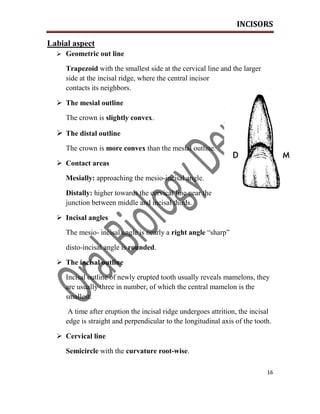This document provides details on the anatomy and morphology of maxillary and mandibular incisors. It describes the key identifying features, chronology of development, and anatomical features of the maxillary central incisor including its labial, lingual, mesial, distal, and incisal aspects as well as variations. It then summarizes the anatomy of the maxillary lateral incisor and notes it is generally smaller than the central incisor but with greater morphological variation. Finally, it briefly introduces the four mandibular incisors.




















